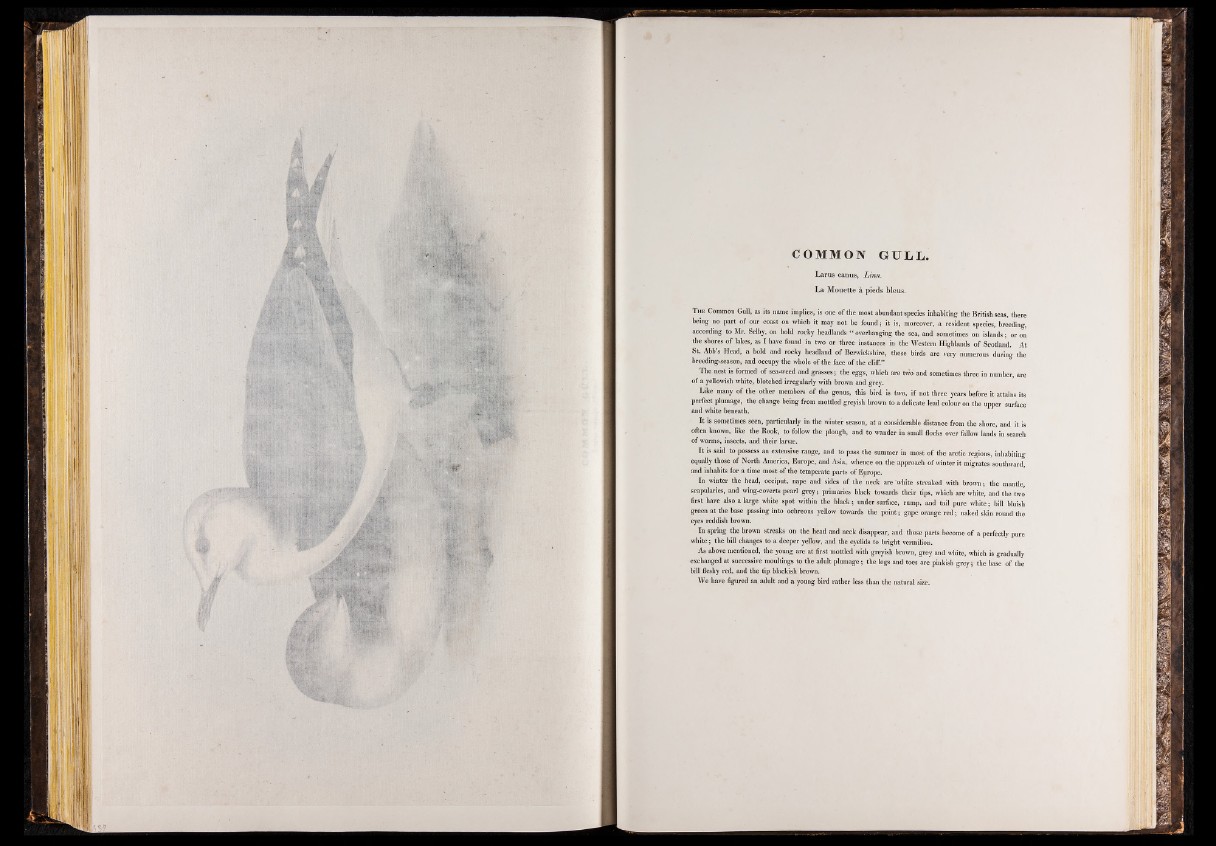
COMMON GULL.
L a ru s canus, Lin n .
L a Mo u e tte à pieds bleus.
T h e Common Gull, as its name implies, is one of the most abundant species inhabiting the British seas, there
being no part of our coast on which it may not be found ; it is, moreover, a resident species, breeding,
according to Mr. Selby, on bold rocky headlands “ overhanging the sea, and sometimes on islands ; or on
the shores of lakes, as I have found in two or three instances in the Western Highlands of Scotland. At
St. Abb’s Head, a bold and rocky headland of Berwickshire, these birds are very numerous during the
breeding-season, and occupy the whole of the face of the cliff.”
The nest is formed of sea-weed and grasses; the eggs, which are two and sometimes three in number, are
of a yellowish white, blotched irregularly with brown and grey.
Like many of the other members of the genus, this bird is two, if not three years before it attains its
perfect plumage, the change being from mottled greyish brown to a delicate lead colour on the upper surface
and white beneath.
It is sometimes seen, particularly in the winter season, at a considerable distance from the shore, and it is
often known, like the Rook, to follow the plough, and to wander in small flocks over fallow lands in search
of worms, insects, and their larvae.
It is said to possess an exteusive range, and to pass the summer in most of the arctic regions, inhabiting
equally those of North America, Europe, and Asia, whence on the approach of winter it migrates southward,
and inhabits for a time most of the temperate parts of Europe.
In winter the head, occiput, nape and sides of the neck are 'white streaked with brown ; the mantle,
scapularies, and wing-coverts pearl grey ; primaries black towards their tips, which are white, and the two
first have also a large white spot within the black; under surface, rump, and tail pure white; bill bluish
green at the base passing into ochreous yellow towards the point ; gape orange red ; naked skin round the
eyes reddish brown.
In spring the brown streaks on the head and neck disappear, and those parts become of a perfectly pure
white ; thè bill changes to a deeper yellow, and the eyelids to bright vermilion.
As above mentioned, the young are at first mottled with greyish brown, grey and white, which is gradually
exchanged at successive moultings to the adult plumage ; the legs and toes are pinkish grey; the base of the
bill fleshy red, and the tip blackish brown.
We have figured an adult and a young bird rather less than the natural size.